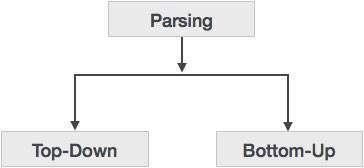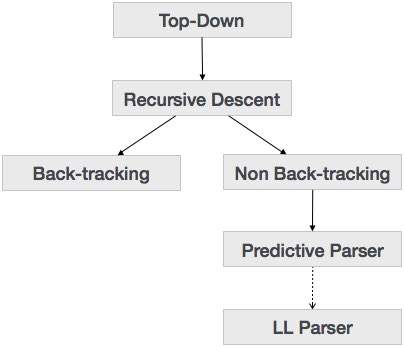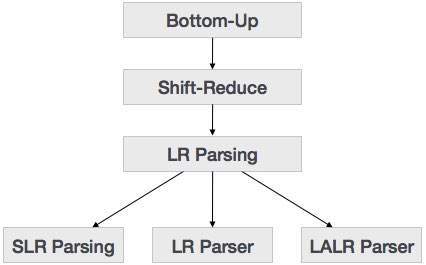Syntax analyzers follow production rules defined by means of context-free grammar. The way the production rules are implemented (derivation) divides parsing into two types : top-down parsing and bottom-up parsing.

Top-down Parsing
When the parser starts constructing the parse tree from the start symbol and then tries to transform the start symbol to the input, it is called top-down parsing.
- Recursive descent parsing : It is a common form of top-down parsing. It is called recursive as it uses recursive procedures to process the input. Recursive descent parsing suffers from backtracking.
- Backtracking : It means, if one derivation of a production fails, the syntax analyzer restarts the process using different rules of same production. This technique may process the input string more than once to determine the right production.
The types of top-down parsing are depicted below:

Bottom-up Parsing
As the name suggests, bottom-up parsing starts with the input symbols and tries to construct the parse tree up to the start symbol.
Example:
Input string : a + b * c
Production rules:
S → E E → E + T E → E * T E → T T → id
Let us start bottom-up parsing
a + b * c
Read the input and check if any production matches with the input:
a + b * c T + b * c E + b * c E + T * c E * c E * T E S

